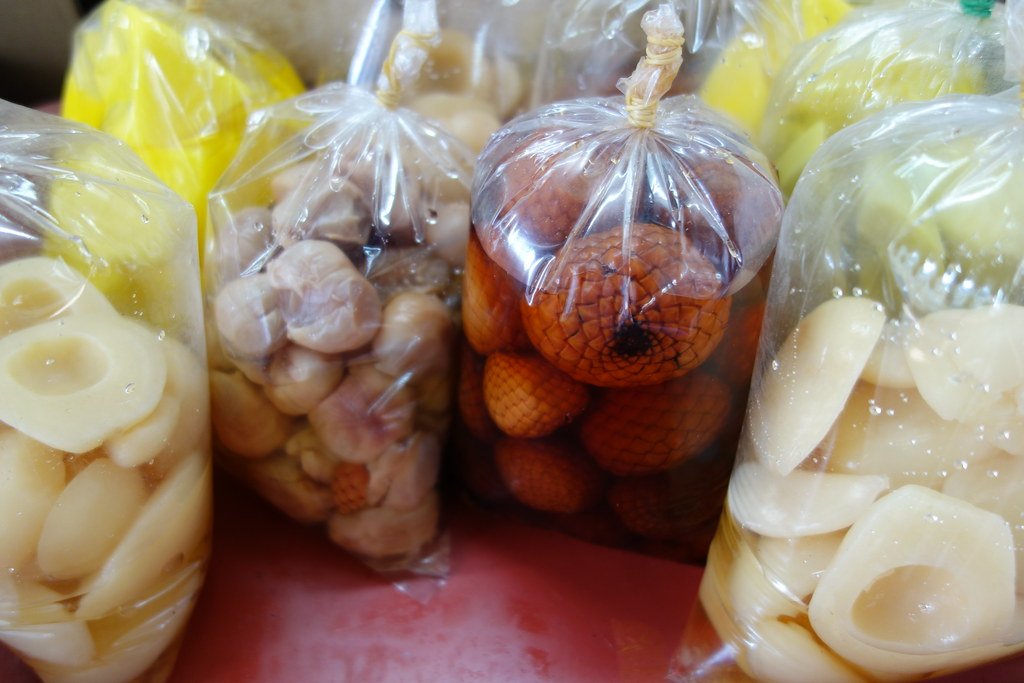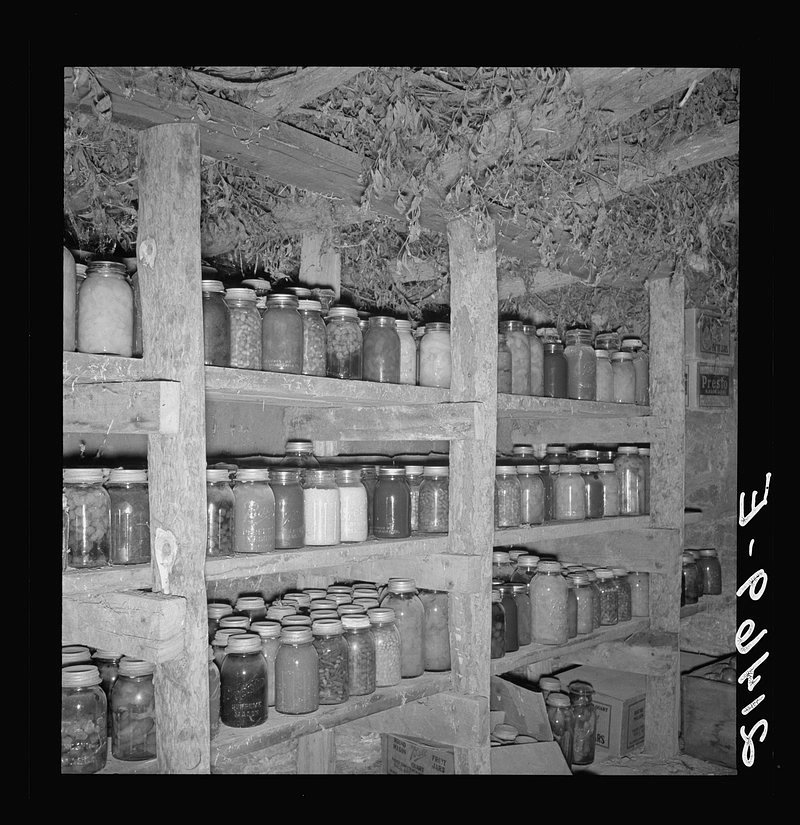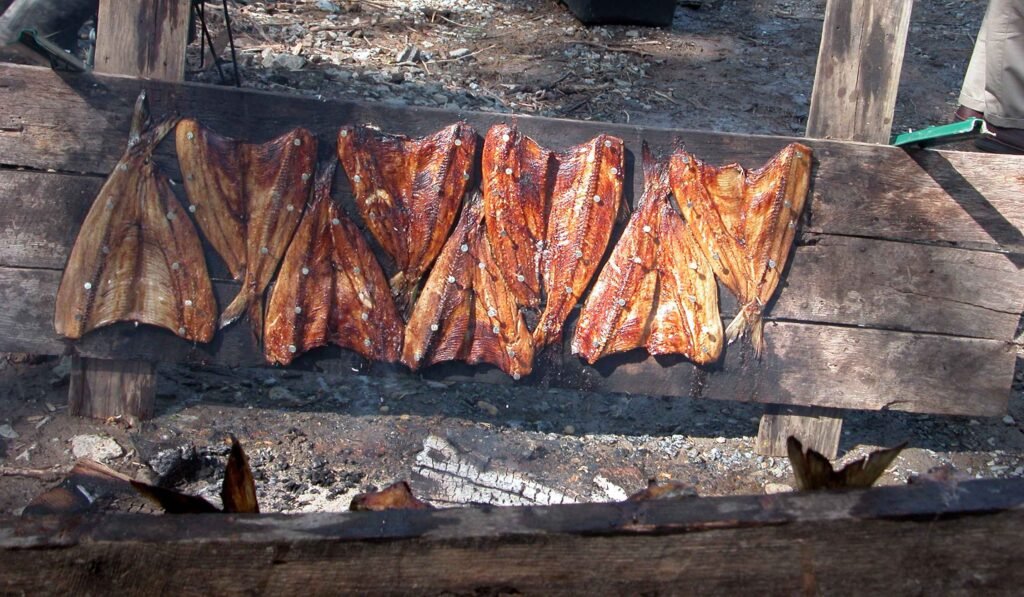Now Reading: How to Make Your Own Preserved Fruits
-
01
How to Make Your Own Preserved Fruits

How to Make Your Own Preserved Fruits
Imagine biting into a slice of juicy, sun-ripened peach, long after the summer days have bid farewell. Envision the burst of sweetness exploding in your mouth, as if capturing the essence of that delectable fruit in a single moment. Preserved fruits hold the magical power to transport us back to the flavors of the past, to savor those vibrant tastes all year round. Whether you want to indulge in nostalgic fig preserves or create unique combinations like blueberry-lavender jam, making your very own preserved fruits is a delightful journey that allows you to preserve the charm of seasonal fruits for months to come. In this article, we will unlock the secrets of transforming fruits into long-lasting treasures, guiding you through the process step by step, and inspiring your culinary creativity along the way. Get ready to embark on a delicious adventure that unveils the art of making your own preserved fruits, where taste memories become time capsules of flavors.
Table of Contents
- Important Considerations for Making Preserved Fruits
- Preservation Methods: Choosing the Right Technique for Each Fruit
- Selecting the Finest Fruits for Preservation
- Pro Tips for Preparing Fruits before Preservation
- The Art of Flavoring Preserved Fruits
- Q&A
- The Way Forward

Important Considerations for Making Preserved Fruits
When it comes to making preserved fruits, there are a few key considerations that can make all the difference in creating delicious and long-lasting treats. Here are some important factors to keep in mind:
- Fruit selection: Choose ripe and firm fruits to ensure the best flavor and texture in your preserved fruits. Avoid overripe or bruised fruits as they may affect the overall quality of the final product.
- Proper preparation: Thoroughly wash and sanitize your fruits before starting the preserving process. Remove any stems, pits, or seeds to enhance the aesthetic appeal and ease of eating when enjoying the preserved fruits later on.
- Addition of sweeteners: Depending on personal preference and the fruit’s natural sweetness, consider adding sweeteners such as sugar or honey. This not only enhances the taste but also helps in preserving the fruits for a longer shelf life.
- Jar selection and sterilization: Use jars specifically designed for canning and preserving, ensuring they are clean and sterilized before use. Proper sealing is crucial for preventing spoilage, so ensure good airtight seals.
- Pasteurization process: To increase the shelf life and eliminate any bacteria or microorganisms that may be present, consider the pasteurization process. This involves heating the jars in boiling water, killing any potential contaminants.
Preserving fruits is a wonderful way to enjoy them all-year-round and add a burst of flavor to your meals. By considering these important factors, you can ensure your preserved fruits are not only delicious but also safe to enjoy for an extended period.

Preservation Methods: Choosing the Right Technique for Each Fruit
Preserving fruits not only helps prolong their shelf life but also allows you to enjoy their goodness even when they are out of season. Each fruit has its unique characteristics, and choosing the right preservation technique is crucial to maintain their flavor, texture, and nutritional value. Here are some methods to help you make the right choice:
1. Freezing:
Freezing is an excellent preservation technique for fruits that have a high water content, such as berries, grapes, and sliced mangoes. Start by washing and drying the fruits thoroughly. Cut larger fruits into manageable pieces and remove any pits or seeds if necessary. Place the fruits in a single layer on a baking sheet and freeze them for a few hours until firm. Once firm, transfer them to airtight containers or freezer bags, making sure to squeeze out any excess air. Label the containers with the date and type of fruit for easy identification.
2. Canning:
Canning is a preferred method for preserving many fruits, including peaches, apples, and pears. Begin by peeling, coring, and slicing the fruits. Fill sterilized jars with the prepared fruit, leaving a headspace at the top. You can opt to add sugar syrup or fruit juice to enhance the flavor, but it’s not necessary. Carefully wipe the jar rims, seal with lids and rings, and process them in a water bath or pressure canner according to the fruit-specific instructions. Be sure to store the processed jars in a cool, dark place for long-lasting preservation.
3. Drying:
Drying is an age-old method of preserving fruits, ideal for fruits that are naturally low in water content, like apples, apricots, and grapes. Start by washing and removing any imperfections from the fruits. Cut them into thin, uniform slices, or for smaller fruits, halve or quarter them. Arrange the fruit pieces in a single layer on drying racks or trays. Place the trays in an oven or use a food dehydrator at a low temperature, ideally between 120-140°F (50-60°C). Allow the fruits to dry until they are leathery and no longer sticky to touch. Once dried, store them in airtight containers in a cool, dry place, away from direct sunlight for extended shelf life.
By choosing the right preservation method for each fruit, you can ensure that your favorite fruits are always within reach, whether it’s for a refreshing smoothie or a delicious pie.
Selecting the Finest Fruits for Preservation
The Art of Selecting the Perfect Fruits for Preservation
Preserving fruits is not only a delightful craft but also a way to capture the essence of each season. When it comes to , there are a few key factors to consider. First and foremost, prioritize freshness. Look for fruits that are firm, plump, and vibrant in color. Avoid any signs of bruising, mold, or overripeness, as these may affect the quality and taste of the preserved fruit.
Here are some essential tips to help you choose the best fruits for preservation:
- Opt for locally grown fruits whenever possible. They are likely to be fresher and have a better flavor.
- Consider the ripeness stage of the fruit depending on the preservation method. Slightly underripe fruits are ideal for canning, while fully ripe fruits are better suited for freezing or dehydrating.
- Choose fruits that are in season for optimal flavor and affordability.
- Inspect the skin or peel of the fruit. It should be smooth, shiny, and without blemishes or discoloration.
- Take note of the fragrance and aroma. A gentle sniff can give you a good idea of the fruit’s freshness and sweetness.
By being selective and thoughtful in your fruit choices, you can elevate the taste and overall quality of your preserved creations. Remember, the foundation of any excellent preserved fruit lies in the careful curation of the finest ingredients.
Pro Tips for Preparing Fruits before Preservation
When it comes to preserving fruits, proper preparation is key to ensuring the best results. Here are some pro tips to help you prepare your fruits before preservation:
- Wash the fruits: Start by giving your fruits a gentle wash under cold running water. This helps remove any dirt, residue, or pesticides on the surface.
- Remove any damaged parts: Inspect each fruit carefully and remove any bruised, overripe, or damaged areas. This helps prevent spoilage and ensures that only the freshest parts are preserved.
- Peel or slice if necessary: Depending on the type of fruit and your personal preference, you may need to peel or slice them before preservation. This step is especially important for fruits like apples, pineapples, or mangoes.
- Treat for browning: Some fruits, like apples or pears, tend to brown when exposed to air. To prevent this discoloration, you can treat them with a mixture of lemon juice and water before preserving.
By following these pro tips, you’ll be well on your way to preserving your fruits in the best possible way. Remember, proper preparation not only enhances the taste and appearance of your preserved fruits but also ensures their longevity.
The Art of Flavoring Preserved Fruits
In the enchanting world of culinary creations, there exists an artistic skill that elevates preserved fruits to extraordinary heights - the art of flavoring. It is a delicate dance of melding natural sweetness with an array of palate-pleasing enhancements, resulting in harmonious symphonies of taste that are both delightful and unforgettable.
When it comes to flavoring preserved fruits, the possibilities are as vast as the imagination. Here, we dive into the realms of creativity and let our taste buds explore the wonders of this culinary art form.
- Herbs and Spices: Embrace the complexity of flavors by infusing preserved fruits with a tantalizing blend of herbs and spices. From the warmth of cinnamon to the invigorating kick of ginger, these aromatic additives can transform a simple jam or chutney into a sensory experience.
- Liquors and Liqueurs: Elevate your preserved fruits with a splash of liquid elegance. A drizzle of rum or a generous pour of Grand Marnier can add a sophisticated twist, letting the fruits soak up the essence and creating a marriage of exquisite flavors.
- Citrus Zest: Unleash the bright and zesty side of preserved fruits by incorporating the vibrant essence of citrus zest. Whether it’s the tangy allure of lemon, the floral notes of orange, or the invigorating burst of lime, these peels can infuse preserved fruits with a refreshing twist.
Unleash your inner artist and embark on a flavor-filled journey with preserved fruits. Embrace experimentation, break traditional boundaries, and let your creations dance on the taste buds of those fortunate enough to indulge. The art of flavoring is waiting to be explored, so pick up your apron and let your culinary prowess shine!
Q&A
Can you explain what preserved fruits are?
Preserved fruits are fruits that have been treated in a way that extends their shelf life. This can be done through processes such as canning or drying.
What are the benefits of making your own preserved fruits?
Making your own preserved fruits allows you to have control over the ingredients used, ensuring they are fresh and free from additives or preservatives. It also allows you to preserve seasonal fruits for enjoyment throughout the year.
What types of fruits can be preserved?
A wide variety of fruits can be preserved, including berries, cherries, apples, pears, peaches, and citrus fruits. It’s best to choose fruits that are ripe but still firm for the best results.
What equipment is needed to start making preserved fruits?
Basic equipment includes glass jars with lids, a large pot, tongs, a ladle, and a canning funnel. Optional equipment includes a water bath canner or a dehydrator if you choose to dry your fruits.
What ingredients are required besides fruit?
The main ingredient is obviously fruit, but you may also need sugar, lemon juice or citric acid for flavor and preservation purposes. Some recipes might call for spices like cinnamon or cloves to enhance the flavor.
What is the process for canning preserved fruits?
The process involves washing and preparing the fruit, then heating it in a syrup made with sugar and water. The fruit is then packed into jars, covered with the hot syrup, and processed in a boiling water bath for the specified time.
How can fruits be dried for preservation?
Fruits can be dried by slicing them and arranging them on trays or using a dehydrator. The fruit is then dried at a low temperature until it has lost most of its moisture content, resulting in a sweet and chewy end product.
How long can preserved fruits be stored?
When properly preserved, fruits can last for several months or even up to a year. It’s important to store them in a cool, dry place away from direct sunlight to maintain their quality.
How can preserved fruits be used in recipes?
Preserved fruits can be enjoyed on their own as a healthy snack, added to baked goods like pies or cakes, or used as toppings for yogurt, ice cream, or oatmeal. They can also be used in savory dishes to add a touch of sweetness.
The Way Forward
As we near the end of this juicy journey into the world of preserved fruits, it’s time to savor the sweet satisfaction of your accomplishments. With your newfound knowledge and a sprinkle of creativity, you can now delight in the luscious tastes of these edible gems throughout the seasons.
Remember, making your own preserved fruits isn’t just about preserving the harvest. It’s a culinary adventure that allows you to explore flavors, preserve memories, and create edible masterpieces that will tantalize your taste buds. The possibilities are limitless, limited only by your imagination and the fruits that Mother Nature provides.
From the fragrant tang of preserved lemons to the sun-kissed sweetness of candied oranges, your pantry will now hold an array of culinary treasures waiting to be savored. Each jar, carefully preserved, becomes a tiny time capsule that captures the essence of summer or the fleeting beauty of fall.
So, as you embark on your preservation journey, don’t be afraid to experiment with different fruits and flavors. Add a sprinkle of cinnamon to your apple preserves or infuse some tart cherry with a touch of vanilla. Let your taste buds be your guide, and let your imagination soar as you create your own personal fruit symphony.
As the seasons change and the fruits come and go, your preserved creations will bring a burst of sunshine to even the dreariest of days. Whether you’re spreading your homemade raspberry jam on warm toast or savoring a spoonful of tropical mango marmalade, you’ll be transported to sun-drenched orchards and lush green fields with each bite.
So, dust off those Mason jars, gather your fruits, and let the magic of preservation begin. With a little patience, a dash of creativity, and loads of enthusiasm, you can capture nature’s bounty in all its glory. And remember, homemade preserved fruits not only taste divine but also make for thoughtful gifts that will leave your loved ones eagerly awaiting each seasonal batch.
As we bid adieu, let us celebrate the beauty of preserving and the joy it brings to our palates. So, dear reader, go forth and embrace the art of making your own preserved fruits. Bask in the sweet aromas that fill your kitchen, and indulge in the pleasures of a well-stocked pantry. May your fruits forever be preserved, and may your journey be filled with flavors that sing and memories that last a lifetime.
As an affiliate, my content may feature links to products I personally use and recommend. By taking action, like subscribing or making a purchase, you’ll be supporting my work and fueling my taco cravings at the same time. Win-win, right?
Want to read more? Check out our Affiliate Disclosure page.





